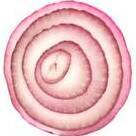-
Similar Content
-
By Spaidan
Hello growers
I would love to have an opinion on this topic. Let me update you on what I have been working with. I have a one plant indoor grow inside a 80cm x 80cm grow tent. I use a 40l fabric pot with both Orgasoilux and Freedom farms soil (green bag). The bottom half I use Orgasoilux(20l) and the top half I use Freedom farms soil(20l). Throughout veg all I give the plant is Biodyne Environoc 401 (microbes), Molasses and water. This results in an extremely healthy plant.
Once I flip to flower I start using organic bottled nutrients. In the past I have used Biobizz Bio-bloom, and more recently I have used Dirty hands inc - Bio-Phos (Jamie's brand). I give 3ml Bio-Phos once a week early flower and up it to 5ml every week mid to late flower. Plus a molasses feeding every 2 weeks and stopped using Biodyne microbes 1 week into flower.
I was thinking about completely ditching bottled nutrients and going the topdressing route for flower. I was thinking of maybe topdressing a week before the flip with Jamie's elemental blend. I am just worried if it will provide enough for the plants through to harvest. I was also thinking of maybe using my own topdressing blend of Dry kelp, Gypsum, Malted Barley and Worm Castings. Would love an opinion on switching to topdressing for flower and if the elemental blend should be more than enough to take me to harvest. If you think I should just stick to bottled nutrients for flower let me know. I am going to include photo's of my 2 previous grows using the method I have stated above. Just trying to get the best quality flower possible :)
Some thoughts of mine...…
Topdressing vs Liquid Nutrients?
Biobizz Bio-Bloom vs Dirty Hands Inc Bio-Phos?
One topdressing enough 1 week before flip?
Elemental Blend or my own flowering mix?
----------------------------------------------------------------------------------------------------------------------------------
My Grow:
Medium: Top Half Freedom Farms soil (20l) + bottom half Orgasoilux(20l)
Additives and Amendments: Molasses + Biodyne Environoc 401 Microbes + Dirty Hands Inc - Bio-Phos + Mycoroot (seedling)
-----------------------------------------------------------------------------------------------------------------------------------
(Seedling)
- Solo Cup + Freedom Farms soil + Mycoroot
-Transplant in week 2 of veg to 40l
-----------------------------------------------------------------------------------------------------------------------------------
(Veg Stage)
- initial inoculant 2ml Environoc Microbes
-1ml per litre Environoc every 2 weeks
-5ml per litre Molasses every 2 weeks
-Stop Environoc 1 week into flower
------------------------------------------------------------------------------------------------------------------------------------
(Flower Stage)
-3ml Bio-Phos every week (early flower)
-5ml Bio-Phos every week (late flower)
-5ml Molasses every 2 weeks
-Stop Bio-Phos 2 weeks before harvest
-Feed molasses until harvest
-------------------------------------------------------------------------------------------------------------------------------------
Pictures below include TH seeds - Orangesicle + Trainwreck (darker leaves) and a photo of Orangesicle during veg
-
By wanna be dagga kop
Aweh,
What organic pesticide can I use during flower to fight spider mites besides pest pro as I've been using that and it isn't working, I need halp ASAP
-
By monkeybar
Hey guys!
I am really looking forward to this grow. Objective is for personal breeding purposes.
This will be my first time experimenting with breeding cannabis, any help is appreciated 🙂
Currently growing Laughing Buddha (Barney's Farm) and Charlotte's Angel (Dutch Passion). Plan is to cross Novakane with these strains, as well as breeding Novakane F2 seeds.
Novakane F1 seeds were sourced from @Totemic. On a side note, just a thank you from my part. The beans I ordered arrived swiftly, with a lot of freebies! The quality of these seeds are unmatched.
Started germinating today, soaked 5 regular seeds for 30min in Explogrow. Afterwards transferring them to a 1:100 solution of Explogrow and pH 6 water for 12 hours.
Am a fan of the paper-towel method, and have had great success placing said paper-towel inside a plastic bag on top of my router. Will do this next...
Grow setup:
240W LM301b + Epistar 660nm Kingbrite Quantum Board
Freedom Farms Premium Soil
T.A. Pro Organic Nutrients
1.2 x 0.7m Grow Tent
-
By Stinger96
Good evening Growmies...
So I stumbled across this stray the other day and was intrigued by it for some reason...
It seems to be a Strong Sativa and a female... So I took some clones there and then and when I got home put them in some soil and in a make shift Scorpio Coffee cup dome..
Going to grow them out and hoping for a surprise..👌🌱🇿🇦
-
By wanna be dagga kop
Aweh,
So my one plant is starting to turn brown on the tips on and I'm sure its not nutrient burn, could it be a potassium deficiency and how would I be able to fix it?
If its not potassium deficiency please help me identify what is wrong.
Thanks in advance
-









Recommended Posts
Join the conversation
You can post now and register later. If you have an account, sign in now to post with your account.